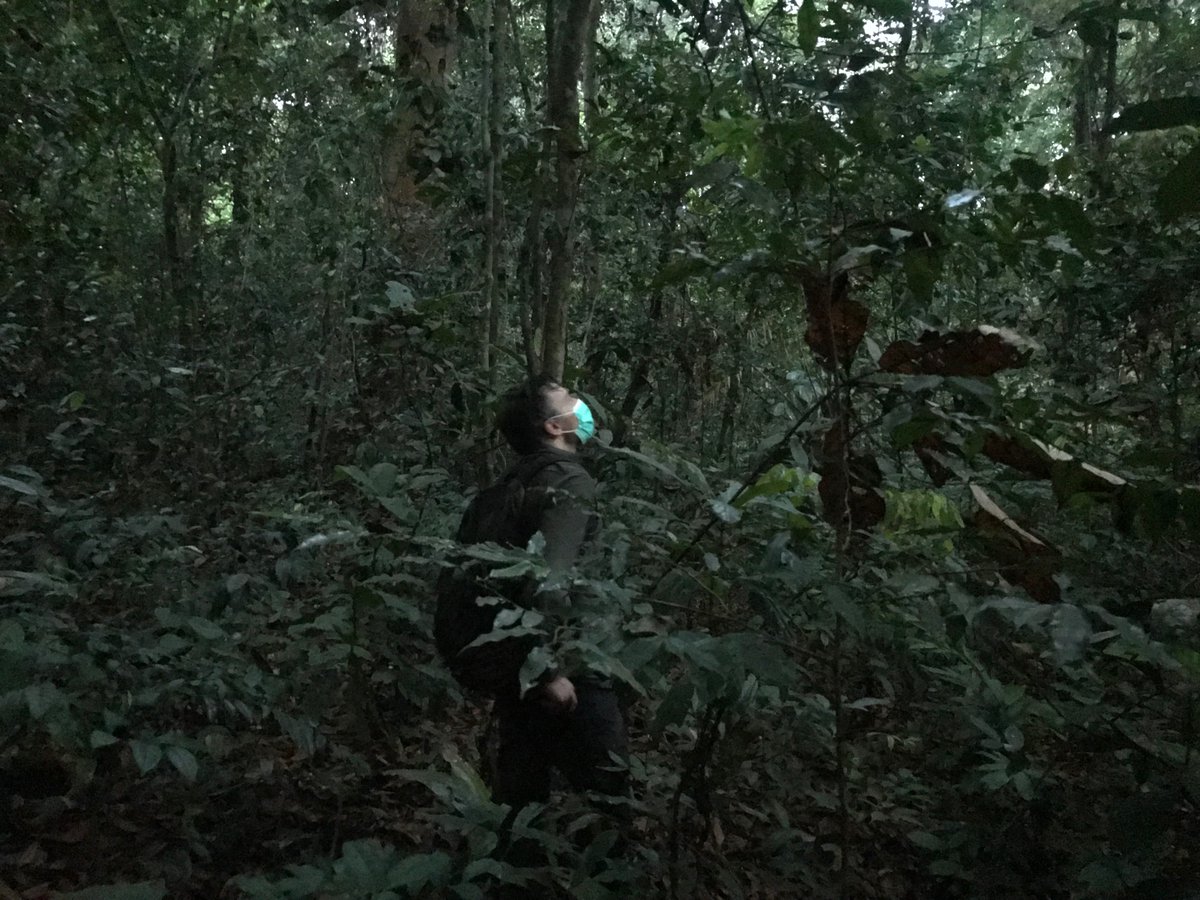
With all the breaking news on vaccines and variants I’ve barely had a chance to talk about this piece on microbes moving between humans and animals.
I think it’s important for the conversations we’re having around #sarscov2.
So, piece is here: sciencemag.org/news/2021/01/w…
And a thread
I think it’s important for the conversations we’re having around #sarscov2.
So, piece is here: sciencemag.org/news/2021/01/w…
And a thread
I’ve long been interested in the way infectious diseases affect wild animals and what we can learn about human disease from this.
So in 2019 I joined @Leendertz_Lab on a research trip to Taï National Forest in Cote d’Ivoire, where he has been studying this for 20 years.
So in 2019 I joined @Leendertz_Lab on a research trip to Taï National Forest in Cote d’Ivoire, where he has been studying this for 20 years.
@Leendertz_Lab The research station in Taï goes back to Christophe Boesch and Hedwige Boesch-Achermann who came to the forest in 1979 to study the chimpanzees. It took them years to habituate the animals (get them used to humans). Ever since then, researchers have been following them.
@Leendertz_Lab In 1994, chimpanzees started dying. The researchers dissected one of the chimps on the dining table of their camp (they wore gloves, but no gowns or masks). A week later, a woman from the team fell ill (she recovered). It turned out to be a new species of Ebola: Taï forest Ebola.
@Leendertz_Lab It was a wake-up call, Boesch says today. Infectious diseases were clearly more important than zoology had taught him.
And he decided to get a vet to permanently track the animals’ health and study their infections. Fabian Leendertz took that job 20 years ago.
And he decided to get a vet to permanently track the animals’ health and study their infections. Fabian Leendertz took that job 20 years ago.
@Leendertz_Lab Leendertz and his colleagues have studied many pathogens and outbreaks. On the trip in 2019 he was actually looking to see Woodstock, a chimp that had recently been diagnosed with leprosy, a disease never described in wild chimps before.
(My story here: sciencemag.org/news/2020/11/l…).
(My story here: sciencemag.org/news/2020/11/l…).
@Leendertz_Lab Long story (for another time), but Leendertz and I never got to see Woodstock on that trip. We hiked through the forest at night to where he had made his nest, but apparently he had left it before sunrise.
Here’s a photo of Leendertz listening for any noise that morning:
Here’s a photo of Leendertz listening for any noise that morning:

@Leendertz_Lab One of the saddest, most important findings of Leendertz' career was a paper published in 2008 showing that the researchers in Taï had themselves caused several outbreaks with human respiratory pathogens that had killed many chimpanzees. sciencedirect.com/science/articl…
@Leendertz_Lab “Reverse zoonoses” is what @GoldbergTony calls this.
He told me: “It’s a world of viruses that are crossing species in every direction and whenever that happens, it can cause devastating losses.”
Indeed there is a lot of that happening as Goldberg, Leendertz and others show.
He told me: “It’s a world of viruses that are crossing species in every direction and whenever that happens, it can cause devastating losses.”
Indeed there is a lot of that happening as Goldberg, Leendertz and others show.
@Leendertz_Lab @GoldbergTony You can read more about this in the story. I just want to make 2 points here:
@Leendertz_Lab @GoldbergTony 1. Diseases like #sarscov2 don’t strike us like lightning out of a blue sky. There is thunder and lightning all around us all the time.
But we only sit up and notice on the rare occasions when lightning strikes a human. Actually, sadly, a human from a rich western country.
But we only sit up and notice on the rare occasions when lightning strikes a human. Actually, sadly, a human from a rich western country.
So I think of researchers like Leendertz, Goldberg, @EpsteinJon and others as the people who do not just investigate lightning strikes. They investigate the thunder too, the storm clouds gathering, the electricity building up, the lightning that we missed - and that missed us.
@EpsteinJon 2. Infectious diseases are not on a one-way street from animals to humans. With our encroachment on nature, we are not just putting ourselves at risk but also animals that are already threatened by extinction.
We need to talk about this aspect of the animal-human interface too!
We need to talk about this aspect of the animal-human interface too!
@EpsteinJon As @KJHockings told me about the chimpanzees: “On top of all of the deforestation, the poaching … they are just getting bashed by these infectious diseases.”
So a threat like #sarscov2 has to be taken seriously as a potential threat to these animals too, not just to humans.
So a threat like #sarscov2 has to be taken seriously as a potential threat to these animals too, not just to humans.
@EpsteinJon @KJHockings And if you want to help these scientists do some actual research, here is a survey for people who either have visited or are interested in visiting a wild great ape tourism site in Africa:
exeter.onlinesurveys.ac.uk/reducing-trans…
exeter.onlinesurveys.ac.uk/reducing-trans…
• • •
Missing some Tweet in this thread? You can try to
force a refresh




